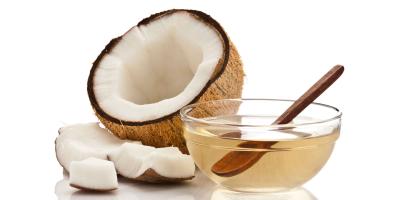
Omega-3 and Omega-6 fatty acids are two types of fatty acids that are essential for normal physiologic function, cell membrane structure and the cell function of humans, as well as dogs. Experts consider Omega-3 fatty acids essential during gestation and early development, while the Omega-6 fatty acid linoleic acid is essential for normal reproduction, growth, immune function, and skin and coat health.
The Essentials of Omega-3 Fatty Acids
Your dog relies on Omega-3 fatty acids for many things, including vision and brain development in young puppies, helping manage inflammation in skin and joints, and a whole host of other physiologic functions.
Because dogs are incapable of producing Omega-3 fatty acids on their own, they must get them through their diet. The most common fatty acids added to pet food are DHA (Docosahexaenoic acid) and EPA (Eicosapentaenoic acid).
Benefits of Omega-3 Fatty Acids
- Since Omega-3 fatty acids are a type of fat, they serve as a source of calories for your dog.
- Growing puppies require a dietary source of the Omega-3 fatty acid DHA to help support proper development and function of the brain, the central nervous tissue and vision.
- For pregnant and lactating dogs, Omega-3 fatty acids are essential for proper development of the brains and retinas of their puppies.
- Omega-3 fatty acids help manage inflammation, especially in the skin and joints.
What are some good sources of Omega-3 fatty acids?
Omega-3 fatty acids are typically found in marine sources. Purina uses fish oil or fish meal as ingredients to supply Omega-3 fatty acids. Some products may state that they have been enriched with DHA or EPA.
Omega-6 fatty acids Are Also An Important Part of Your Dog’s Diet
Omega-6 fatty acids are required for reproduction, growth, immune function, and skin and coat health. Dogs also require the Omega-6 fatty acid linoleic acid in their diet, thus making it an essential fatty acid for dogs. Another important Omega-6 fatty acid is arachidonic acid, which dogs can produce in their bodies from precursors.
Benefits of Omega-6 Fatty Acids
- Omega-6 fatty acids are involved in cell membrane structure and cell function.
- They are required for normal reproduction, growth, immune function, and skin and coat health.
- Just like Omega-3 fatty acids, Omega-6 fatty acids are a type of fat and, thus contribute calories to your dog’s diet.
What are some good sources of Omega-6 fatty acids?
As a rule, Omega-6 fatty acids are found in animal and plant sources, such as:
- Vegetable oils such as sunflower, corn, safflower, canola/rapeseed, and soybean oils are particularly rich in Omega-6 fatty acids.
- Chicken and animal fats are also a good source.
How can I be sure my dog food contains Omega-3 and Omega-6 fatty acids?
Read the ingredients and look for these critical nutrients in a healthy dog’s diet. At Purina, our nutritionists have incorporated the appropriate level of these fatty acids into the ingredients of our formulas.
Purina’s growth products for puppies are all formulated with Omega-3 fatty acids. You can also check your pet food label and look to see if fish oil or fishmeal is listed as an ingredient, or if the label states that the product has been enriched with DHA (Docosahexaenoic acid) and EPA (Eicosapentaenoic acid). If a product lists salmon, salmon meal, or trout as ingredients, that’s also an indication that your dog will be receiving Omega-3 fatty acids.
For Omega-6 fatty acids, look for vegetable oils listed in the ingredients. Corn oil and soybean oil are particularly rich in Omega-6 fatty acids. Animal fats are also a potential source.
Related articles



